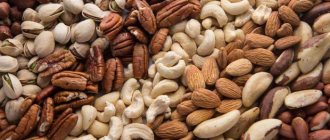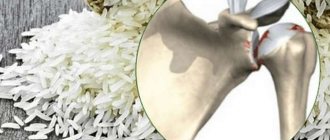The concept of refeed in weight loss
Carbohydrate loading is the deliberate consumption of carbohydrates, even if a person is on a diet.
The frequency and duration of the refeed is determined individually. Main functions of the refeed food strategy:
- Psychological - includes high-carbohydrate foods in the diet, eliminates hunger and associated discomfort, and allows you to stick to a diet without unplanned breakdowns.
- Physiological - sets the body up for weight loss, launching the necessary processes; neutralizes side effects that can be caused by fasting.
Conditions for proper loading organization:
- the main diet should be no-carbohydrate or low-carbohydrate;
- regular physical activity.
Effect on the body
Following a low-carb or no-carb diet reduces the intensity of your workouts. A person becomes less resilient, and difficulties arise when performing physical activity.
The refeed system provides the body with the energy it needs, so you can continue to eat right and exercise at your usual pace.
Loading with carbohydrates helps normalize hormonal levels, so weight gradually decreases. The processes of hormone production and metabolism are restored, digestion improves.
Carbohydrate loading on a low-carb diet helps normalize hormonal levels.
Differences from a cheat meal
A cheat meal is a planned diet break that makes it easier to endure psychological discomfort.
A cheat meal involves one additional intake of prohibited food with a set frequency - once every 7 days or once every 14 days. But this technique is not recommended for overweight people.
A refeed is also a planned disruption to your diet, but it lasts longer.
People who are not overweight and want to build muscle tissue resort to this method. Difference between cheat meal and refeed:
| Cheatmeal | Refeed |
| It is allowed to consume prohibited and harmful foods, including snacks and fast food. | Only healthy carbohydrates are allowed: honey, legumes, cereals, dried fruits, potatoes. |
| One meal. | Duration - from 5 hours to 2 days. |
| Caloric intake is not controlled. | Increase in caloric intake within acceptable limits. |
| Does not comply with the principles of proper nutrition (PN). | Based on PP. |
We combine junk food and fat burning.
You can benefit from practicing a cheat meal every now and then. When used correctly you can:
- Avoid potential catabolism from a long-term fat-burning diet.
- Replenish glycogen stores to support tough workouts.
- Restart “stagnant” metabolism.
- Giving yourself the opportunity to relax your diet, knowing about which, will make it easier for you to withstand the most difficult days of dietary restrictions.
The only problem with cheat meals is that most dieters fail to use them correctly. They cheat meals at the wrong time, for the wrong reasons, in the wrong way. But you shouldn't be one of those who make such mistakes.
Cheat meal - what is it and how does it work?
Bodybuilders have long been at the forefront of dietary innovation. The concept of strategic "overeating" can be applied to bodybuilders who, after following a long-term pre-contest diet, binge during the post-performance party and end up looking even better than they did on stage: fuller and freakier.
“Damn it, if I had looked like this yesterday, I would have become a champion!”
A non-competitive athlete may use this trick as part of their diet and notice after a few days that they are even drier than before the cheat meal. And at the same time, the quality of his training also improves. How is this possible?
A cheat meal includes calories from all macronutrient sources: carbohydrates, fats and protein. These calories will give your metabolism a temporary boost. If you've ever had a big cheat meal, then you know about the sweat that comes with it.
The extra carbohydrates will replenish the glycogen stores in your muscles, and the fat will also cause your muscles to expand a little. Increased sodium levels will help glycogen storage and water retention, both of which contribute to increased strength.
Put these factors together and you've got a solid boost to both your diet and your workout routine. The kind of boost that can take your progress to the next level...if you use the cheat meal in the right way.
Follow the signs.
If you use a cheat meal incorrectly, you can only harm your progress. Let's figure it out, when is the time to actually use a cheat meal? Here are the signs of this moment:
- Your training has become clearly crap, and it has become constant: no pump, you are weak, no concentration.
- Body temperature began to drop; you are cold all the time.
- Fat burning has stopped, reducing calories does not help improve the situation.
- You have lost significant weight in a short time - more than 1% of body weight in a week (we do not take into account the first week of cutting, when you lose weight due to water and glycogen)
If you have one or more of these signs, then you have grounds for a cheat meal. If there are none of these signs, then it’s likely that you don’t need a cheat meal, no matter how much you might want one.
What is a refeed, and how is it different from a cheat meal?
The term refeed usually refers to a carbohydrate loading program designed to achieve the same results as a cheat meal. The amount of carbohydrates is quite high, and the goals, as in the case of a cheat meal, are to replenish glycogen stores, prevent catabolism, recharge metabolism and some mental relief.
The main difference between a refeed and a cheat meal is mental. Cheat meals for those who need a short-term diet break. If occasional cheat meals help you stay on your diet longer, then it's obviously a good option for you.
Most people make more progress on a diet that allows them to have a break once a week where they can eat whatever they want for a while, as opposed to eating the same “diet foods” but in larger quantities.
A person who moves at 35 miles per hour for 10 years will in any case overtake someone who moved at 100 miles per hour, but only for 2 years, because... gave up, burned out and stopped moving.
Take your psychology into account.
There is something else that needs to be considered when comparing a cheat meal and a refeed - the features of your psychology.
For some, eating junk food triggers a binge-eating process that ends up lasting hours or even days and causing a setback in the drying process. For such people, controlled refeeds or eating diet foods in large quantities will be a smarter choice.
Some people use a carb refeed day, similar to a high carb day when cycling. This serves the same purpose as a cheat meal or refeed, but spreads out over the entire day instead of just one meal.
The main disadvantage of a whole day of high carbohydrate consumption like the one described above is that you lose the whole day from the fat burning process, instead of losing one hour by limiting yourself to one dish.
However, there will be times when whole days of retreat will also be necessary, depending on how exhausted the person is and how dry he already is. And here we need to make one more note - the drier you are, the more often you will need a cheat meal or refeed.
When you're actually low in body fat, you're at a higher risk of becoming catabolic, so more frequent refeeds are usually necessary to maintain as much muscle as possible.
3 cheat meal instructions.
The question of using a cheat meal is a little more complicated than just “eating a bunch of junk,” but not much. When using a full cheat meal as opposed to a carbohydrate refeed, I usually suggest that my clients follow these instructions:
- Replace your last meal of the day with a cheat meal. This will prevent you from getting carried away and turning it into a prolonged binge, ruining your entire day of dieting.
- Go to bed with a cheat meal for 45-60 minutes. Again, this will keep you from having a cheat meal turn into a binge that will set you back rather than progress. Apart from these rules, eat what you want and as much as you want.
- Have a cheat meal on the evening of the day before you train a large (or lagging) body part, such as your legs or back.
The extra glycogen and fullness ensure you have a great, powerful workout. Some people like to have a cheat meal after a hard or long workout, hoping to improve recovery. This can work too, but I prefer to have a cheat meal the evening before my workout.
Bonus tip: I sometimes tell clients to do a cheat meal and then the next day increase their cardio and/or slightly reduce their calories (usually from carbs or fat).
So, you had a refeed, the next day after it you reduce calories by 10% for all subsequent days. You can also add 10 minutes to cardio on a daily basis.
The result is this trick-combination: with the help of a cheat meal, you speed up your metabolism (and calorie consumption), and then reduce their intake. Thus, you help fat burning on both sides at once.
What can you count on?
Muscles increase in size due to glycogen. A cheat meal will fill your muscles and greatly help with your workout. The next 1-2 days after the cheat meal will probably be the best you’ve felt in a while.
Your weight will increase (in some cases by 2-4 kg), and it will drop back down in about a week.
However, you may not gain that much (depending on how depleted your glycogen stores were at the time of the cheat meal, and how many calories you consumed). This is normal and nothing to worry about. A cheat meal will still “work” even if your weight hasn’t jumped up.
Due to the nature of the hormone aldosterone, weight gain can sometimes take more than one day. It often happened to me that the next day after a cheat meal I gained only 200-400 grams, but at the same time I was much drier.
Then, the next morning, my body kicked back, retained a lot more water, and I was another kilogram heavier. All this is a normal course of events.
Refeed example:
A cheat meal is a simple matter: eat whatever you want, but for a limited period of time. The refeed has somewhat stricter limits.
Here is an example of a carbohydrate refeed for a 90 kg man:
- 2 cups cooked rice (any type)
- 2 large sweet potatoes
- 3 slices whole sprouted grain bread
- 1 boiled chicken breast
- 1 cup broccoli
- 1 piece of fruit
Cheat meals and refeeds are often misinterpreted. Use this guide, and the next time you're on a fat-burning diet, you can even benefit from pizza!
- Original source
- Translation:
Review of the popular FlapJacked protein pancake mix
The Simplest Diet: Article from Testosterone Nation
Liked? Share with your friends!
General benefit
The refeed period not only helps to cope with hunger and replenish the body with necessary carbohydrates. This system has a beneficial effect on the condition of many organs and systems.
Replenishing muscle glycogen stores
Low-carb diets deplete muscle glycogen stores, making it difficult to train at your usual pace. Carbohydrate loading normalizes the concentration of this substance.
Temporarily “turning off” catabolism
In the process of losing weight, the body not only gets rid of fat reserves, muscle tissue also suffers. A protein diet and constant exercise do not always cope with this problem, and refeeding helps block the process of breaking down muscle fibers in the body.
A protein diet may not always help block the breakdown of muscle fibers.
Improving hormonal levels and increasing testosterone levels
The refeed period restores the balance of hormones that help the body cope with hunger.
Dietary intake in men decreases the level of the hormone testosterone. By arranging a planned diet break, you can increase its concentration, maintain men's health and libido normal.
Maintaining women's health
Calorie deficiency in women can cause fertility problems and menstrual irregularities. If this problem is not eliminated in time, the entire body will suffer. For this reason, frequent refeeds are recommended for women following low-carb diets.
Improved immunity
A lack of calories negatively affects the functions of the immune system. With the help of refeed days, you can support a weakened body and improve its protective functions.
Effect on the body
The eod nutrition system can have a positive effect on the body. Everything is simple here. With a short-term increase in calories, leptin levels increase. But what is leptin, how does it work and why is it needed?
Leptin is a peptide hormone that is involved in energy metabolism. Its synthesis occurs in fat cells, so the presence of this hormone depends on the amount of adipose tissue. Leptin reduces hunger. And its decrease slows down metabolism (this explains the decrease in the number of kilograms lost).
Using a refeed helps raise leptin levels. And this leads to a decrease in hunger, speeds up metabolism, and reduces the desire to eat something high-calorie (much less likely to fail the diet). This can be safely called a reboot, after which you can continue your diet and enjoy the pounds you’ve lost.
Using an eod power system also helps:
- Protect muscles from breakdown. After all, the less fat in the body, the higher the percentage of risk of muscle loss.
- Normalize hormonal levels. The level of hormones that are responsible for weight regulation, eating behavior, and metabolic rate (peptide YY, insulin, testosterone) is restored.
- Replenish muscle glycogen stores. “No-carbohydrate” diets significantly reduce the amount of muscle glycogen. As a result, training is sluggish and not enjoyable. Refeeds help replenish its amount and thereby increase the effectiveness of training.
All of the above shows that the eod nutrition system allows you to increase the effectiveness of diets and workouts.
Nutritional Features
Refeed days should not be seen as a way to eat a lot of prohibited foods in a short period of time.
An increase in the amount of carbohydrates is allowed, provided the correct proportions of fat and protein are observed. Among unhealthy foods, you should choose those that contain little fat and a lot of carbohydrates. Too sweet and fatty foods are not suitable.
Required Products
The diet may consist of:
- soy products;
- fruits, nuts, berries, herbs;
- legumes;
- dried fruits;
- whole grain cereals (rice, oats);
- durum wheat pasta;
- unsweetened pastries and rye bread.
You can eat sherbet, dark chocolate, marmalade, honey, halva, marshmallows, and jam. Sugar is limited to a minimum.
Fruits, nuts, and berries can be included in your diet on refeed days.
Prohibited:
- milk chocolate, sweets;
- sweet pastries;
- alcohol, carbonated drinks, energy drinks;
- cakes, cookies, pies, puddings;
- meat by-products (sausage, frankfurters);
- ice cream.
It is recommended to boil, stew or bake products. Fried foods should be avoided.
Sample menu
For a refeed day, you can use the following diet option:
| Meals | Menu |
| First breakfast | Oatmeal with nuts and fruits, cooked in milk; hard-boiled egg, sweet coffee, whole grain bread |
| Lunch | Nuts (handful) |
| Dinner | Pasta soup made with chicken broth; Vegetable Salad; baked chicken; a piece of rye bread; green tea; permitted sweetness |
| Afternoon snack | Milkshake with honey; dried fruits |
| Dinner | Pasta with seafood; Vegetable Salad; bread made from rye flour; Herb tea; jam |
| Late dinner | Kefir or unsweetened yogurt |
When actively involved in sports, it is allowed to consume dried fruits and nuts between meals.
Pasta soup made with chicken broth can be eaten for lunch on fast days.
Correct structure
The correct ratio of BJU and calories:
- Minimum fat.
- Consistent protein levels.
- The main source of calories is carbohydrates.
- The daily caloric intake of a refeed day can be increased by 35-40% in comparison with a diet.
When preparing a salad, you should not use vegetable oil, and you should also choose only low-fat dairy products.
If a refeed is accompanied by dizziness, increased blood sugar levels, or hunger that is difficult to tolerate, then the nutritional structure is adjusted. Healthy fats are added to it: fish, nuts, olive oil, and the amount of grains and vegetables is increased.
Duration and frequency
Regular refeed days are recommended for diets and active training according to the planned scheme:
| Duration | Carbohydrates |
| 5 hours | from 3 to 6 g per kilogram of dry weight* |
| Day | from 8 to 12 g per kilogram of dry weight* |
| 2 days | from 4 to 6 g per kilogram of dry weight* |
*Lean mass is determined by subtracting fat weight from total body weight.
You can find out your fat percentage using a scale with an analyzer. The frequency of carbohydrate nutrition is influenced by:
- calorie content of the diet (the lower the calorie content, the more often it is necessary to use refeed);
- percentage of fat in total body weight;
- intensity of physical activity.
Five hours
The duration of the carbohydrate load is 5 hours, and it must be completed during dinner. The next morning they return to diet.
Day
The daily refeed starts in the morning with breakfast and ends in the evening. The last meal should be organized an hour before going to bed. You should eat in equal portions of 150-200 g.
Two days
The amount of carbohydrates that the body needs is distributed over 2 days and consumed from breakfast to dinner. This way, the optimal level of glucose in the blood is achieved, and there is no feeling of acute hunger.
The frequency of refeed days depends on the caloric content of the diet and the intensity of physical activity.
The difference between refeeds and cheat meals
In the first case, eating unplanned food lasts throughout the day. On Refida, a person allows himself to eat goodies during breakfast, lunch, dinner and snacks.
Be sure to read: Diet for teenagers of different ages: rules, allowed and prohibited foods, weekly menu
In this regard, it is recommended to choose for refeed those sources of carbohydrates that will not only calm the feeling of hunger, but also bring benefits: pasta, potatoes, peaches, mangoes, pears, bread. At the same time, try to monitor the level of fat in your chosen diet.
A cheat meal is a one-time “fasting” meal instead of breakfast, lunch or dinner. Here you don’t have to pay much attention to what’s on the table. But it is better to consume all this before 14:00.
Diet categories
To determine your dietary category, you will need a scale that measures your body fat content.
Distribution table:
| Diet categories | Fat percentage | |
| women | men | |
| 1 | Up to 24% | Up to 15% |
| 2 | From 25 to 34% | From 16 to 25% |
| 3 | From 35% | From 26% |
First
This category includes people who meet the following conditions:
- intense training;
- drying the body;
- strict protein or keto diet.
These conditions eventually lead to hormonal imbalances (decreased libido in men, disruption of the menstrual cycle in women) and a slowdown in metabolic processes. To eliminate these phenomena, regular and long-term carbohydrate loading is needed.
Second
This category includes former athletes and those who periodically visit the gym or run in the morning. Such exercises, combined with a low-carb diet, help get rid of fat deposits and control weight. But losing weight can be accompanied by a plateau effect - the weight stops. You can avoid this by using infrequent refeeds lasting 5 hours.
People who go to the gym can use refeeds infrequently and lasting 5 hours.
Third
This group consists of overweight and obese people who often overeat and do not exercise. For category 3, refeeds are dangerous because they can disrupt the weight loss process. To begin with, nutritionists recommend sticking to a strict diet for a month and exercising regularly, after which you can try this nutritional strategy.
Algorithm for calculating refeed duration
To determine the duration of the carbohydrate diet, you must:
- Find out your fat percentage and calculate your lean body mass.
- Determine dietary category.
- Determine training category.
- Find out the refeed schedule from the table below.
| Categories | Refeed | ||
| dietary | training | duration | periodicity |
| 1 | 1 | 5 hours/day | In 3-5 days |
| 1-2 days | In 7 days | ||
| 2 | day | In 7-10 days | |
| 2 | 1 | 5 hours | A week later |
| day | In 10-14 days | ||
| 2 | 5 hours/day | In 2 weeks | |
| 3 | 1 | 5 hours | In 10-14 days |
| 2 | 5 hours/day | In 3 weeks | |
Features of the keto diet
Carbohydrate loading is effective in combination with keto diets, which involve eliminating carbohydrates from the diet.
Schemes:
- Keto diet “Standard” (a small amount of carbohydrates in the menu) without refeed periods.
- Targeted keto diet with refeeds 60 minutes before and 60 minutes after exercise. Limiting carbohydrate foods in the diet.
- Cyclic option with periodic carbohydrate loadings, which can be determined from the table above.
Keto diet products.
How to eat after a cheat meal: Are cheat meals necessary with proper nutrition?
After the end of the relaxation period, you should return to your usual diet and eat all meals, including snacks.
There is no need to reproach yourself and worry when you find a small gain on the scale. This is natural and normal. After a couple of days, the excess liquid will disappear.
Be sure to read: Budget but effective diet for weight loss: creating a menu for the week
You can : go on a diet the next day with a high content of protein and fruit acids.
You can’t : starve yourself or remove some dishes and products from your diet.
During proper nutrition, cheat meals are recommended if a person still has cravings for forbidden foods. If PP is tolerated in a positive way, then relaxations can be avoided.
Tips and tricks
It is recommended to organize a refeed before strength training or on the day of it according to the following scheme:
- 1st meal - 60 minutes before training;
- 2nd - within an hour after training;
- 3rd - in 2 hours.
You should not purchase prohibited foods for future use, so as not to provoke a diet failure ahead of time.
The optimal time for a refeed is weekends.
The duration of the first refeed should be minimal, and the condition of the body must be monitored. If the return to the diet goes without problems, the weight increases slightly, which is maintained for several days, the muscles become dense, then you can increase the duration of the load.
If swelling, drowsiness, or decreased endurance occur, you should avoid refeeding. Instead, you can use a cheat meal or take a week-long break from your diet every 3 months.
What it is
A refeed is a planned diet violation that involves actively consuming healthy carbohydrates for a certain amount of time without the risk of gaining weight.
Performs 2 functions:
- Psychological: allows you to eat prohibited high-carbohydrate foods, which reduces tension due to hunger pangs and increases the chances of sticking to the diet until the end without breaking down.
- Physiological: it triggers processes in the body that are beneficial for health and weight loss, and reduces the harmful effects of fasting.
To organize a refeed, you must meet a number of conditions:
- the diet should be low-carbohydrate or no-carbohydrate;
- training is required: refeed is the brainchild of the fitness industry, which was originally developed specifically for bodybuilders and those involved in drying the body.
You need to clearly understand the difference between a refeed and a cheat meal. The first does not violate the principles of proper nutrition and is not harmful to health, since it suggests consuming only healthy carbohydrates. The second is more of a psychological release and allows you to enjoy the taste of your favorite fast food.
We wrote about cheat meals earlier; you can familiarize yourself with its principles and rules on this page.
About the term. The word came to us from the English language: “refeed” is translated as “to feed, feed.”
Mistakes in carbohydrate loading
The main mistake is overeating.
You should not indulge in fast food, pizza and other high-calorie, high-fat foods. If you ignore this rule, the carbohydrate regime will lead to a gain of extra calories and weight. But you can’t limit yourself too much, for fear of gaining extra grams. The main thing is to consume permitted foods in moderation.
Do not confuse a refeed with a festive feast and alcohol on weekends.
Failure to adhere to the download schedule and mode is also a common mistake. It is important to maintain regularity.










